Energy Management Systems for Smart Electric Railway Networks: A Methodological Review
Abstract
:1. Introduction
1.1. Motivation
1.2. Literature Review
2. REMS Modeling Review
3. Architecture of the REM-S Network
REM-S Automation Concept
- intelligent substation (ISST): To send commands or suggestions to all elements associated with energy within the subnetwork, ISST is in communication with them. In every elements associated with energy, there is an intelligent entity, called an agent, that can communicate and make decisions in response to commands from ISST.
- Reversible Substations (RSST) and Nonreversible Substations (SST): Several of them negotiated with the main subnetwork agent to connect to the public grid as fixed agents.
- Wayside energy storage systems (ESSs): Assumed to be fixed agents.
- Distributed Energy Resources (DERs): Rail-related renewable resources situated within the subnetwork areas are also considered fixed agents.
- Dynamic On-Board Energy Managers (DOEMs) Installed on the Trains: Their responsibilities include energy management in trains along with contacting subnetworks ISST for recommendations. It traverses through subnetworks and maintains communication with each individual subnetwork’s main agent.
- External Consumers (ECs): In advanced multi-agent systems (MAS), fixed agents are established as workshops, stations, or other loads, such as electric vehicle (EV) charging stations.
- Day Ahead Optimization (DAO): Analyzes the performance of the network for the next day, and encompasses power profiles, energy and power procurement, as well as power sales, in the next 24 h.
- Minutes Ahead Optimization (MAO): Predicts and optimizes the subnetwork status for the next 15 min. In the same manner as the DAO profile, MAO interacts with all agents in the subnetwork, considering power limitations within the subnetwork, as well as excess supply and demand from neighboring subnetworks, the system proposes actions to subnetwork agents, such as SSTs, RSSTs, DERs, ESSs, or DOEMs, for the upcoming 15 min interval.
- Real-Time Operation (RTO): By leveraging the real-time status and behavior of all subnetwork elements, it successfully meets the calculated 15 min MAO profiles.
4. Optimization and Mathematical Methods
4.1. Traditional Optimization Methods
4.2. Modern (Practical) Optimization Methods
4.2.1. Modified Differential Evolution Optimization Algorithm
The Computational Flow of DE
- Step 1: Initialization
- Step 2: Mutation
- Step 3: Crossover
- Step 4: Selection
4.2.2. Demand Response Program
4.2.3. Monte Carlo Simulation
Random Number Generators Based on Linear Recurrences
- Generating Random Variables: Inverse–Transform Method
- ➢
- Generating Random Variables: Acceptance–Rejection Method
- Generate X ∼ g; that is, draw X from pdf g.
- Generate U ∼ U(0, 1), independently of X.
- If output X; otherwise return to step 1.
- 2.
- Generating a Markov Chain
- Draw from its distribution. Set t = 0.
- Draw from the conditional distribution of the given .
- Set t = t + 1 and repeat from Step 2.
- ➢
- Markov Chain Monte Carlo
Monte Carlo for Optimization: Stochastic Approximation
- Initialize ∈ X. Set t = 1.
- Obtain an estimated gradient ∇S() of S at .
- Determine a step size .
- Set
4.2.4. Mixed Integer Linear Programming
- ➢
- LP Computability
- ➢
- MILP Computability
- There is no known polynomial–time algorithm.
- There are little chances that one will ever be found.
- Even small problems may be hard to solve.
- ➢
- Heuristic MILP
- Determine the initial kernel and arrange the remaining assets into a sorted collection of buckets.
- Find the solution to the MILP problem by considering only the assets within the initial kernel.
- Continue the process repeatedly until a specific condition or criterion is satisfied:
- Modify or update the kernel;
- Find the solution to the MILP problem by considering the assets within the current kernel along with the assets in the next bucket on the list;
- Exclude or eliminate the bucket from the list.
4.2.5. Non-Linear Programming
5. Discussion
6. Conclusions
Author Contributions
Funding
Institutional Review Board Statement
Informed Consent Statement
Data Availability Statement
Conflicts of Interest
Nomenclature
| CO2 | Carbon dioxide |
| CTSSs | Co-phase traction substations |
| cdf | Cumulative distribution function |
| DR | Demand Response |
| DSM | Demand Side Management |
| DT | Digital Twin |
| DERs | Distributed Energy Resources |
| EMU | Electric multiple units |
| ERPSs | Electric Railway Power Systems |
| ETs | Electric trains |
| EV | Electric Vehicle |
| ERS | Electric railway system |
| ESSs | Energy Storage Systems |
| EHS | Energy hub system |
| EMS | Energy management system |
| FCHL | Fuel cell hybrid locomotives |
| GHG | Greenhouse gases |
| HS | Harmonic Search |
| HSR | High-speed rail |
| HESS | Hybrid energy storage system |
| HTs | Hydrogen trains |
| LCGs | Linear congruent generators |
| MILP | Mixed Integer Linear Programming |
| MRG | Multi-recursive generators |
| OPF | Optimized power flow |
| PV | Photovoltaic |
| PFCs | Power flow controllers |
| REMS | Railway Energy Management Systems |
| RBE | Regenerative braking energy |
| RERs | Renewable Energy Resources |
| SGs | Smart grid solutions |
| SRS | Smart railway station |
| SOE | State of energy |
| TOC | Total operating costs |
| TPSS | Traction power supply system |
| WT | Wind turbine |
References
- Vagnoni, E.; Moradi, A. Local government’s contribution to low carbon mobility transitions. J. Clean. Prod. 2018, 176, 486–502. [Google Scholar] [CrossRef]
- International Energy Agency (IEA) and International Union of Railways (UIC). Energy Consumption and CO2 Emissions Focus on Passenger Rail Services. Available online: https://uic.org/IMG/pdf/handbook_iea-uic_2017_web3.pdf (accessed on 7 June 2017).
- Pachauri, R.K.; Allen, M.R.; Barros, V.R.; Broome, J.; Cramer, W.; Christ, R.; Church, J.A.; Clarke, L.; Dahe, Q.; Dasgupta, P. Climate change 2014: Synthesis report. In Contribution of Working Groups I, II and III to the Fifth Assessment Report of the Intergovernmental Panel on Climate Change; IPCC: Geneva, Szwitzerland, 2014. [Google Scholar]
- Isetti, G.; Ferraretto, V.; Stawinoga, A.E.; Gruber, M.; DellaValle, N. Is caring about the environment enough for sustainable mobility? An exploratory case study from South Tyrol (Italy). Transp. Res. Interdiscip. Perspect. 2020, 6, 100148. [Google Scholar] [CrossRef]
- Chaturvedi, V.; Kim, S.H. Long term energy and emission implications of a global shift to electricity-based public rail transportation system. Energy Policy 2015, 81, 176–185. [Google Scholar] [CrossRef]
- Hayashiya, H. Recent trend of regenerative energy utilization in traction power supply system in Japan. Urban Rail. Transit. 2017, 3, 183–191. [Google Scholar] [CrossRef] [Green Version]
- Ghaviha, N.; Campillo, J.; Bohlin, M.; Dahlquist, E. Review of application of energy storage devices in railway transportation. Energy Procedia 2017, 105, 4561–4568. [Google Scholar] [CrossRef]
- Cheng, Q. Energy management system of a smart railway station considering stochastic behaviour of ESS and PV generation. In Proceedings of the 2018 International Symposium on Computer, Consumer and Control (IS3C), Taichung, Taiwan, 6–8 December 2018; IEEE: New York, NY, USA, 2018; pp. 457–460. [Google Scholar]
- Naseri Gorgoon, M.; Davoodi, M.; Motieyan, H. An Agent-Based Modelling for Ride Sharing Optimization Using a* Algorithm and Clustering Approach. Int. Arch. Photogramm. Remote Sens. Spat. Inf. Sci. 2019, 42, 793–796. [Google Scholar] [CrossRef] [Green Version]
- Zhang, H.; Zhou, X.; Wei, D.; Li, M. Research on Green Building Design Strategy of Large Space Building—Taking Taiyuan South Railway Station as a Case. In Proceedings of the 2015 International Symposium on Energy Science and Chemical Engineering, Guangzhou, China, 12–13 December 2015; Atlantis Press: Amsterdam, The Netherlands, 2015; pp. 369–373. [Google Scholar]
- China Economic and Social Council. Available online: http://www.china-esc.org.cn/c/2017-10-11/1832499.shtml (accessed on 29 October 2018).
- Ahmadi, M.; Kaleybar, H.J.; Brenna, M.; Castelli-Dezza, F.; Carmeli, M.S. DC Railway Micro Grid Adopting Renewable Energy and EV Fast Charging Station. In Proceedings of the 2021 IEEE International Conference on Environment and Electrical Engineering and 2021 IEEE Industrial and Commercial Power Systems Europe (EEEIC/I&CPS Europe), Bari, Italy, 7–10 September 2021; IEEE: New York, NY, USA, 2021; pp. 1–6. [Google Scholar]
- Longo, M.; Franzò, S.; Latilla, V.M.; Antonucci, G. Smart energy management of a railway station. In Proceedings of the 2018 IEEE International Conference on Environment and Electrical Engineering and 2018 IEEE Industrial and Commercial Power Systems Europe (EEEIC/I&CPS Europe), Palermo, Italy, 12–15 June 2018; IEEE: New York, NY, USA, 2018; pp. 1–5. [Google Scholar]
- Razik, L.; Berr, N.; Khayyam, S.; Ponci, F.; Monti, A. REM-S–railway energy management in real rail operation. IEEE Trans. Veh. Technol. 2018, 68, 1266–1277. [Google Scholar] [CrossRef]
- Kuzior, A.; Staszek, M. Energy management in the railway industry: A case study of rail freight carrier in Poland. Energies 2021, 14, 6875. [Google Scholar] [CrossRef]
- Song, Y.; Liu, Z.; Rønnquist, A.; Nåvik, P.; Liu, Z. Contact wire irregularity stochastics and effect on high-speed railway pantograph–catenary interactions. IEEE Trans. Instrum. Meas. 2020, 69, 8196–8206. [Google Scholar] [CrossRef]
- Garramiola, F.; Poza, J.; Del Olmo, J.; Madina, P.; Almandoz, G. DC-link voltage and catenary current sensors fault reconstruction for railway traction drives. Sensors 2018, 18, 1998. [Google Scholar] [CrossRef] [Green Version]
- Kaleybar, H.J.; Brenna, M.; Castelli-Dezza, F.; Carmeli, M.S. Smart Hybrid Electric Railway Grids: A Comparative Study of Architectures. In Proceedings of the 2023 IEEE International Conference on Electrical Systems for Aircraft, Railway, Ship Propulsion and Road Vehicles & International Transportation Electrification Conference (ESARS-ITEC), Venice, Italy, 29–31 March 2023; IEEE: New York, NY, USA, 2023; pp. 1–6. [Google Scholar]
- Ciccarelli, F.; Del Pizzo, A.; Iannuzzi, D. Improvement of energy efficiency in light railway vehicles based on power management control of wayside lithium-ion capacitor storage. IEEE Trans. Power Electron. 2013, 29, 275–286. [Google Scholar] [CrossRef]
- Novak, H.; Vašak, M.; Lešić, V. Hierarchical energy management of multi-train railway transport system with energy storages. In Proceedings of the 2016 IEEE International Conference on Intelligent Rail Transportation (ICIRT), Birmingham, UK, 23–25 August 2016; pp. 130–138. [Google Scholar]
- Aguado, J.A.; Racero, A.J.S.; de la Torre, S. Optimal operation of electric railways with renewable energy and electric storage systems. IEEE Trans. Smart Grid 2016, 9, 993–1001. [Google Scholar] [CrossRef]
- Falvo, M.C.; Foiadelli, F. Preliminary analysis for the design of an energy-efficient and environmental sustainable integrated mobility system. In Proceedings of the IEEE PES General Meeting, Minneapolis, MN, USA, 25–29 July 2010; IEEE: New York, NY, USA, 2010; pp. 1–7. [Google Scholar]
- Hernandez, J.; Sutil, F. Electric vehicle charging stations feeded by renewable: PV and train regenerative braking. IEEE Lat. Am. Trans. 2016, 14, 3262–3269. [Google Scholar] [CrossRef]
- Golnargesi, M.; Kaleybar, H.J.; Brenna, M.; Zaninelli, D. Collaborative Electric Vehicle Charging Strategy with Regenerative Braking Energy of Railway Systems in Park & Ride Areas. In Proceedings of the 2023 14th Power Electronics, Drive Systems, and Technologies Conference (PEDSTC), Babol, Iran, 31 January–2 February 2023; IEEE: New York, NY, USA, 2023; pp. 1–5. [Google Scholar]
- Karakuş, F.; Çiçek, A.; Erdinç, O. Integration of electric vehicle parking lots into railway network considering line losses: A case study of Istanbul M1 metro line. J. Energy Storage 2023, 63, 107101. [Google Scholar] [CrossRef]
- Calvillo, C.; Sánchez-Miralles, A.; Villar, J.; Martín, F. Impact of EV penetration in the interconnected urban environment of a smart city. Energy 2017, 141, 2218–2233. [Google Scholar] [CrossRef] [Green Version]
- Kaleybar, H.J.; Brenna, M.; Castelli-Dezza, F.; Zaninelli, D. Sustainable MVDC Railway System Integrated with Renewable Energy Sources and EV Charging Station. In Proceedings of the 2022 IEEE Vehicle Power and Propulsion Conference (VPPC), Merced, CA, USA, 1–4 November 2022; IEEE: New York, NY, USA, 2022; pp. 1–6. [Google Scholar]
- Tamaddon, M.; Da Voodi, M. A Novel Application of the Travel Profile for the Electrical Bus in Electric Systems for Transportation. In Proceedings of the 2022 30th International Conference on Electrical Engineering (ICEE), Tehran, Iran, 17–19 May 2022; IEEE: New York, NY, USA, 2022; pp. 779–783. [Google Scholar]
- Mohsen Davoodi, M.T. Optimal Trajectory Planning for Electric Train Operations by Travel Profile Method in Electrical Transportation System. In Proceedings of the 7th International Conference on Applied Research in Science and Engineering Conference, Science Nordic Institution, Aachen, Germany, 28 June 2023. [Google Scholar]
- Mohamed, A.; Salehi, V.; Ma, T.; Mohammed, O. Real-time energy management algorithm for plug-in hybrid electric vehicle charging parks involving sustainable energy. IEEE Trans. Sustain. Energy 2013, 5, 577–586. [Google Scholar] [CrossRef]
- Hoarau, Q.; Perez, Y. Interactions between electric mobility and photovoltaic generation: A review. Renew. Sustain. Energy Rev. 2018, 94, 510–522. [Google Scholar] [CrossRef] [Green Version]
- Alghoul, M.; Hammadi, F.; Amin, N.; Asim, N. The role of existing infrastructure of fuel stations in deploying solar charging systems, electric vehicles and solar energy: A preliminary analysis. Technol. Forecast. Soc. Change 2018, 137, 317–326. [Google Scholar] [CrossRef]
- Sedighizadeh, M.; Mohammadpour, A.; Alavi, S.M.M. A daytime optimal stochastic energy management for EV commercial parking lots by using approximate dynamic programming and hybrid big bang big crunch algorithm. Sustain. Cities Soc. 2019, 45, 486–498. [Google Scholar] [CrossRef]
- De La Torre, S.; Sánchez-Racero, A.J.; Aguado, J.A.; Reyes, M.; Martínez, O. Optimal sizing of energy storage for regenerative braking in electric railway systems. IEEE Trans. Power Syst. 2014, 30, 1492–1500. [Google Scholar] [CrossRef]
- Pilo, E.; Mazumder, S.K.; González-Franco, I. Smart electrical infrastructure for AC-fed railways with neutral zones. IEEE Trans. Intell. Transp. Syst. 2014, 16, 642–652. [Google Scholar] [CrossRef]
- Novak, H.; Lešić, V.; Vašak, M. Hierarchical model predictive control for coordinated electric railway traction system energy management. IEEE Trans. Intell. Transp. Syst. 2018, 20, 2715–2727. [Google Scholar] [CrossRef]
- Calvillo, C.F.; Sánchez-Miralles, Á.; Villar, J. Synergies of electric urban transport systems and distributed energy resources in smart cities. IEEE Trans. Intell. Transp. Syst. 2017, 19, 2445–2453. [Google Scholar] [CrossRef]
- Kleftakis, V.A.; Hatziargyriou, N.D. Optimal control of reversible substations and wayside storage devices for voltage stabilization and energy savings in metro railway networks. IEEE Trans. Transp. Electrif. 2019, 5, 515–523. [Google Scholar] [CrossRef]
- Ahmadi, M.; Kaleybar, H.J.; Brenna, M.; Castelli-Dezza, F.; Carmeli, M.S. Adapting digital twin technology in electric railway power systems. In Proceedings of the 2021 12th Power Electronics, Drive Systems, and Technologies Conference (PEDSTC), Tabriz, Iran, 2–4 February 2021; IEEE: New York, NY, USA, 2021; pp. 1–6. [Google Scholar]
- Teymourfar, R.; Farivar, G.; Iman-Eini, H.; Asaei, B. Optimal stationary super-capacitor energy storage system in a metro line. In Proceedings of the 2011 2nd International Conference on Electric Power and Energy Conversion Systems (EPECS), Sharjah, United Arab Emirates, 5–17 November 2011; IEEE: New York, NY, USA, 2011; pp. 1–5. [Google Scholar]
- Silvas, E.; Hofman, T.; Murgovski, N.; Etman, L.P.; Steinbuch, M. Review of optimization strategies for system-level design in hybrid electric vehicles. IEEE Trans. Veh. Technol. 2016, 66, 57–70. [Google Scholar] [CrossRef]
- Çiçek, A.; Şengör, İ.; Güner, S.; Karakuş, F.; Erenoğlu, A.K.; Erdinç, O.; Shafie-Khah, M.; Catalão, J.P. Integrated Rail System and EV Parking Lot Operation with Regenerative Braking Energy, Energy Storage System and PV Availability. IEEE Trans. Smart Grid 2022, 13, 3049–3058. [Google Scholar] [CrossRef]
- EN50329; Railway Applications—Fixed Installations—Traction Transformers. European Standard: Plzen, Czech Republic, 2003.
- Şengör, İ.; Kılıçkıran, H.C.; Akdemir, H.; Kekezoǧlu, B.; Erdinc, O.; Catalao, J.P. Energy management of a smart railway station considering regenerative braking and stochastic behaviour of ESS and PV generation. IEEE Trans. Sustain. Energy 2017, 9, 1041–1050. [Google Scholar] [CrossRef]
- Park, S.; Salkuti, S.R. Optimal energy management of railroad electrical systems with renewable energy and energy storage systems. Sustainability 2019, 11, 6293. [Google Scholar] [CrossRef] [Green Version]
- Salkuti, S.R. Optimal operation of electrified railways with renewable sources and storage. J. Electr. Eng. Technol. 2021, 16, 239–248. [Google Scholar] [CrossRef]
- Ehteshami, H.; Hashemi-Dezaki, H.; Javadi, S. Optimal stochastic energy management of electrical railway systems considering renewable energy resources’ uncertainties and interactions with utility grid. Energy Sci. Eng. 2022, 10, 578–599. [Google Scholar] [CrossRef]
- Akbari, S.; Fazel, S.S.; Jadid, S. Optimal operation of a smart railway station based on a multi-energy hub structure considering environmental perspective and regenerative braking utilization. Energy Sci. Eng. 2021, 9, 1614–1631. [Google Scholar] [CrossRef]
- Akbari, S.; Hashemi-Dezaki, H.; Fazel, S.S. Optimal clustering-based operation of smart railway stations considering uncertainties of renewable energy sources and regenerative braking energies. Electr. Power Syst. Res. 2022, 213, 108744. [Google Scholar] [CrossRef]
- Xiao, J.; Wang, P.; Setyawan, L. Multilevel energy management system for hybridization of energy storages in DC microgrids. IEEE Trans. Smart Grid 2015, 7, 847–856. [Google Scholar] [CrossRef]
- Cheng, Z.; Chen, M.; Liu, Y.; Cheng, Y. A two-level energy management model for railway substation with POC and energy storage. In Proceedings of the 2020 15th IEEE Conference on Industrial Electronics and Applications (ICIEA), Kristiansand, Norway, 9–13 November 2020; IEEE: New York, NY, USA, 2020; pp. 397–401. [Google Scholar]
- Liu, Y.; Chen, M.; Cheng, Z.; Chen, Y.; Li, Q. Robust energy management of high-speed railway co-phase traction substation with uncertain PV generation and traction load. IEEE Trans. Intell. Transp. Syst. 2021, 23, 5079–5091. [Google Scholar] [CrossRef]
- Mahmud, K.; Sahoo, A.K.; Ravishankar, J.; Dong, Z.Y. Coordinated multilayer control for energy management of grid-connected AC microgrids. IEEE Trans. Ind. Appl. 2019, 55, 7071–7081. [Google Scholar] [CrossRef]
- Brenna, M.; Foiadelli, F.; Kaleybar, H.J. The Evolution of Railway Power Supply Systems Toward Smart Microgrids: The concept of the energy hub and integration of distributed energy resources. IEEE Electrif. Mag. 2020, 8, 12–23. [Google Scholar] [CrossRef]
- Railway Handbook: Energy Consumption and CO2 Emissions; International Energy Agency & International Union of Railways: Paris, France, 2012.
- Khayyam, S.; Ponci, F.; Goikoetxea, J.; Recagno, V.; Bagliano, V.; Monti, A. Railway energy management system: Centralized–decentralized automation architecture. IEEE Trans. Smart Grid 2015, 7, 1164–1175. [Google Scholar] [CrossRef]
- Chavali, P.; Yang, P.; Nehorai, A. A distributed algorithm of appliance scheduling for home energy management system. IEEE Trans. Smart Grid 2014, 5, 282–290. [Google Scholar] [CrossRef]
- Zhao, Z.; Lee, W.C.; Shin, Y.; Song, K.-B. An optimal power scheduling method for demand response in home energy management system. IEEE Trans. Smart Grid 2013, 4, 1391–1400. [Google Scholar] [CrossRef]
- Costanzo, G.T.; Zhu, G.; Anjos, M.F.; Savard, G. A system architecture for autonomous demand side load management in smart buildings. IEEE Trans. Smart Grid 2012, 3, 2157–2165. [Google Scholar] [CrossRef]
- Liu, J.; Li, X.; Liu, D.; Liu, H.; Mao, P. Study on data management of fundamental model in control center for smart grid operation. IEEE Trans. Smart Grid 2011, 2, 573–579. [Google Scholar] [CrossRef]
- ETSI Standard SG-CG/M490/C; CEN-CENELEC-ETSI: Smart Grid Reference Architecture. ETSI: Valbonne, France, 2012.
- McArthur, S.D.; Davidson, E.M.; Catterson, V.M.; Dimeas, A.L.; Hatziargyriou, N.D.; Ponci, F.; Funabashi, T. Multi-agent systems for power engineering applications—Part I: Concepts, approaches, and technical challenges. IEEE Trans. Power Syst. 2007, 22, 1743–1752. [Google Scholar] [CrossRef] [Green Version]
- Nayak, M.; Krishnanand, K.; Rout, P. Modified differential evolution optimization algorithm for multi-constraint optimal power flow. In Proceedings of the 2011 International Conference on Energy, Automation and Signal, Bhubaneswar, India, 28–30 December 2011; IEEE: New York, NY, USA, 2011; pp. 1–7. [Google Scholar]
- Salar, M.; Ghasemi, M.; Dizangian, B. A fast GA-based method for solving truss optimization problems. Int. J. Optim. Civ. Eng. 2015, 6, 101–114. [Google Scholar]
- Davoodi, M.; Mesgari, M. GIS-based route finding using ant colony optimization and urban traffic data from different sources. Int. Arch. Photogramm. Remote Sens. Spat. Inf. Sci. 2015, 40, 129. [Google Scholar] [CrossRef] [Green Version]
- Salar, M.; Ghasemi, M.; Dizangian, B. Practical optimization of deployable and scissor-like structures using a fast GA method. Front. Struct. Civ. Eng. 2019, 13, 557–568. [Google Scholar] [CrossRef]
- Davoodi, M.; Malekpour Golsefidi, M.; Mesgari, M. A hybrid optimization method for vehicle routing problem using artificial bee colony and genetic algorithm. Int. Arch. Photogramm. Remote Sens. Spat. Inf. Sci. 2019, 42, 293–297. [Google Scholar] [CrossRef] [Green Version]
- Kaleybar, H.J.; Davoodi, M.; Brenna, M.; Zaninelli, D. Applications of Genetic Algorithm and its Variants in Rail Vehicle Systems: A Bibliometric Analysis and Comprehensive Review. IEEE Access 2023, 11, 68972–68993. [Google Scholar] [CrossRef]
- Kumari, M.S.; Maheswarapu, S. Enhanced genetic algorithm based computation technique for multi-objective optimal power flow solution. Int. J. Electr. Power Energy Syst. 2010, 32, 736–742. [Google Scholar] [CrossRef]
- Vlachogiannis, J.G.; Lee, K.Y. A comparative study on particle swarm optimization for optimal steady-state performance of power systems. IEEE Trans. Power Syst. 2006, 21, 1718–1728. [Google Scholar] [CrossRef] [Green Version]
- Vesterstrom, J.; Thomsen, R. A comparative study of differential evolution, particle swarm optimization, and evolutionary algorithms on numerical benchmark problems. In Proceedings of the 2004 Congress on Evolutionary Computation (IEEE Cat. No. 04TH8753), Portland, OR, USA, 19–23 June 2004; IEEE: New York, NY, USA, 2004; pp. 1980–1987. [Google Scholar]
- Ozturk, A.; Cobanli, S.; Erdogmus, P.; Tosun, S. Reactive power optimization with artificial bee colony algorithm. Sci. Res. Essays 2010, 5, 2848–2857. [Google Scholar]
- Geem, Z.W.; Kim, J.H.; Loganathan, G.V. A new heuristic optimization algorithm: Harmony search. Simulation 2001, 76, 60–68. [Google Scholar] [CrossRef]
- Quintana, V.; Santos-Nieto, M. Reactive-power dispatch by successive quadratic programming. IEEE Trans. Energy Convers. 1989, 4, 425–435. [Google Scholar] [CrossRef]
- Sun, D.I.; Ashley, B.; Brewer, B.; Hughes, A.; Tinney, W.F. Optimal power flow by Newton approach. IEEE Trans. Power Appar. Syst. 1984, 10, 2864–2880. [Google Scholar] [CrossRef]
- Eddy, S.R. What is dynamic programming? Nat. Biotechnol. 2004, 22, 909–910. [Google Scholar] [CrossRef]
- Deeb, N.; Shahidehpour, S. Linear reactive power optimization in a large power network using the decomposition approach. IEEE Trans. Power Syst. 1990, 5, 428–438. [Google Scholar] [CrossRef]
- Granville, S. Optimal reactive dispatch through interior point methods. IEEE Trans. Power Syst. 1994, 9, 136–146. [Google Scholar] [CrossRef]
- Storn, R. Differrential evolution-a simple and efficient adaptive scheme for global optimization over continuous spaces, Technical report. Int. Comput. Sci. Inst. 1995, 11, 136–146. [Google Scholar]
- Abido, M. Multiobjective particle swarm optimization for environmental/economic dispatch problem. Electr. Power Syst. Res. 2009, 79, 1105–1113. [Google Scholar] [CrossRef]
- Abido, M. A novel multiobjective evolutionary algorithm for environmental/economic power dispatch. Electr. Power Syst. Res. 2003, 65, 71–81. [Google Scholar] [CrossRef]
- Lee, K.; Park, Y.; Ortiz, J. A united approach to optimal real and reactive power dispatch. IEEE Trans. Power Appar. Syst. 1985, 104, 1147–1153. [Google Scholar] [CrossRef]
- Vaisakh, K.; Srinivas, L. Evolving ant direction differential evolution for OPF with non-smooth cost functions. Eng. Appl. Artif. Intell. 2011, 24, 426–436. [Google Scholar] [CrossRef]
- Kaelo, P.; Ali, M. A numerical study of some modified differential evolution algorithms. Eur. J. Oper. Res. 2006, 169, 1176–1184. [Google Scholar] [CrossRef]
- Palensky, P.; Dietrich, D. Demand side management: Demand response, intelligent energy systems, and smart loads. IEEE Trans. Ind. Inform. 2011, 7, 381–388. [Google Scholar] [CrossRef] [Green Version]
- Eissa, M.M. Demand side management program evaluation based on industrial and commercial field data. Energy Policy 2011, 39, 5961–5969. [Google Scholar] [CrossRef]
- Mohsenian-Rad, A.-H.; Wong, V.W.; Jatskevich, J.; Schober, R.; Leon-Garcia, A. Autonomous demand-side management based on game-theoretic energy consumption scheduling for the future smart grid. IEEE Trans. Smart Grid 2010, 1, 320–331. [Google Scholar] [CrossRef] [Green Version]
- Qdr, Q. Benefits of Demand Response in Electricity Markets and Recommendations for Achieving Them; Technical Report; US Department Energy: Washington, DC, USA, 2006.
- Mohagheghi, S.; Yang, F.; Falahati, B. Impact of demand response on distribution system reliability. In Proceedings of the 2011 IEEE Power and Energy Society General Meeting, Detroit, MI, USA, 24–28 July 2011; IEEE: New York, NY, USA, 2011; pp. 1–7. [Google Scholar]
- Brooks, A.; Lu, E.; Reicher, D.; Spirakis, C.; Weihl, B. Demand dispatch. IEEE Power Energy Mag. 2010, 8, 20–29. [Google Scholar] [CrossRef]
- Greening, L.A. Demand response resources: Who is responsible for implementation in a deregulated market? Energy 2010, 35, 1518–1525. [Google Scholar] [CrossRef]
- Varaiya, P.P.; Wu, F.F.; Bialek, J.W. Smart operation of smart grid: Risk-limiting dispatch. Proc. IEEE 2010, 99, 40–57. [Google Scholar] [CrossRef]
- Vardakas, J.S.; Zorba, N.; Verikoukis, C.V. A survey on demand response programs in smart grids: Pricing methods and optimization algorithms. IEEE Commun. Surv. Tutor. 2014, 17, 152–178. [Google Scholar] [CrossRef]
- Alagoz, B.; Kaygusuz, A.; Karabiber, A. A user-mode distributed energy management architecture for smart grid applications. Energy 2012, 44, 167–177. [Google Scholar] [CrossRef]
- Wissner, M. Smart Grid–A Saucerful Secrets? Appl. Energy 2011, 88, 2509–2518. [Google Scholar] [CrossRef]
- Nguyen, D.T.; Negnevitsky, M.; De Groot, M. Pool-based demand response exchange—Concept and modeling. IEEE Trans. Power Syst. 2010, 26, 1677–1685. [Google Scholar] [CrossRef]
- Iwayemi, A.; Yi, P.; Dong, X.; Zhou, C. Knowing when to act: An optimal stopping method for smart grid demand response. IEEE Netw. 2011, 25, 44–49. [Google Scholar] [CrossRef]
- Dong, Q.; Yu, L.; Song, W.-Z.; Tong, L.; Tang, S. Distributed demand and response algorithm for optimizing social-welfare in smart grid. In Proceedings of the 2012 IEEE 26th International Parallel and Distributed Processing Symposium, Shanghai, China, 21–25 May 2012; IEEE: New York, NY, USA, 2012; pp. 1228–1239. [Google Scholar]
- Koutsopoulos, I.; Tassiulas, L. Optimal control policies for power demand scheduling in the smart grid. IEEE J. Sel. Areas Commun. 2012, 30, 1049–1060. [Google Scholar] [CrossRef]
- Kenton, W. Monte Carlo Simulation: History, How It Works, and 4 Key Steps. Available online: https://www.investopedia.com/terms/m/montecarlosimulation.asp (accessed on 12 June 2023).
- Kroese, D.P.; Rubinstein, R.Y. Monte carlo methods. Wiley Interdiscip. Rev. Comput. Stat. 2012, 4, 48–58. [Google Scholar] [CrossRef]
- Lewis, T.G.; Payne, W.H. Generalized feedback shift register pseudorandom number algorithm. J. ACM (JACM) 1973, 20, 456–468. [Google Scholar] [CrossRef]
- Matsumoto, M.; Nishimura, T. Mersenne twister: A 623-dimensionally equidistributed uniform pseudo-random number generator. ACM Trans. Model. Comput. Simul. 1998, 8, 3–30. [Google Scholar] [CrossRef] [Green Version]
- L’ecuyer, P. Good parameters and implementations for combined multiple recursive random number generators. Oper. Res. 1999, 47, 159–164. [Google Scholar] [CrossRef] [Green Version]
- Metropolis, N.; Rosenbluth, A.W.; Rosenbluth, M.N.; Teller, A.H.; Teller, E. Equation of state calculations by fast computing machines. J. Chem. Phys. 1953, 21, 1087–1092. [Google Scholar] [CrossRef] [Green Version]
- Harold, J.; Kushner, G.; Yin, G. Stochastic approximation and recursive algorithm and applications. Appl. Math. 1997, 35, 10. [Google Scholar]
- Mansini, R.; Ogryczak, W.O.; Speranza, M.G. EURO: The Association of European Operational Research Societies. Linear and Mixed Integer Programming for Portfolio Optimization; Springer: Berlin/Heidelberg, Germany, 2015; Volume 21. [Google Scholar]
- Ćalasan, M.P.; Nikitović, L.; Mujović, S. CONOPT solver embedded in GAMS for optimal power flow. J. Renew. Sustain. Energy 2019, 11, 046301. [Google Scholar] [CrossRef] [Green Version]
- Drud, A. CONOPT: A GRG code for large sparse dynamic nonlinear optimization problems. Math. Program. 1985, 31, 153–191. [Google Scholar] [CrossRef]
- Drud, A.S. CONOPT—A large-scale GRG code. ORSA J. Comput. 1994, 6, 207–216. [Google Scholar] [CrossRef]
- Dostál, Z. Optimal Quadratic Programming Algorithms: With Applications to Variational Inequalities; Springer Science & Business Media: Berlin/Heidelberg, Germany, 2009; Volume 23. [Google Scholar]
- Liu, S.; Wang, J. A simplified dual neural network for quadratic programming with its KWTA application. IEEE Trans. Neural Netw. 2006, 17, 1500–1510. [Google Scholar] [PubMed]
- Lundvall, O.; Klarbring, A. Simulation of wear by use of a nonsmooth Newton method—A spur gear application. Mech. Struct. Mach. 2001, 29, 223–238. [Google Scholar] [CrossRef]
- Broyden, C.G. Quasi-Newton methods and their application to function minimisation. Math. Comput. 1967, 21, 368–381. [Google Scholar] [CrossRef]
- Rao, C.V.; Wright, S.J.; Rawlings, J.B. Application of interior-point methods to model predictive control. J. Optim. Theory Appl. 1998, 99, 723–757. [Google Scholar] [CrossRef] [Green Version]
- Quintana, V.H.; Torres, G.L.; Medina-Palomo, J. Interior-point methods and their applications to power systems: A classification of publications and software codes. IEEE Trans. Power Syst. 2000, 15, 170–176. [Google Scholar] [CrossRef]
- Pereira, M.; Pinto, L. Application of decomposition techniques to the mid-and short-term scheduling of hydrothermal systems. IEEE Trans. Power Appar. Syst. 1983, 102, 3611–3618. [Google Scholar] [CrossRef]
- Fairlie, R.W. An extension of the Blinder-Oaxaca decomposition technique to logit and probit models. J. Econ. Soc. Meas. 2005, 30, 305–316. [Google Scholar] [CrossRef]
- Ko, H.; Koseki, T.; Miyatake, M. Application of dynamic programming to the optimization of the running profile of a train. WIT Trans. Built Environ. 2004, 74, 103–112. [Google Scholar]
- Silverman, H.F.; Morgan, D.P. The application of dynamic programming to connected speech recognition. IEEE ASSP Mag. 1990, 7, 6–25. [Google Scholar] [CrossRef]
- Zhong, J.-H.; Shen, M.; Zhang, J.; Chung, H.S.-H.; Shi, Y.-H.; Li, Y. A differential evolution algorithm with dual populations for solving periodic railway timetable scheduling problem. IEEE Trans. Evol. Comput. 2012, 17, 512–527. [Google Scholar] [CrossRef]
- Phan, G.T.; Do, Q.B.; Ngo, Q.H.; Tran, T.A.; Tran, H.-N. Application of differential evolution algorithm for fuel loading optimization of the DNRR research reactor. Nucl. Eng. Des. 2020, 362, 110582. [Google Scholar] [CrossRef]
- Faruqui, A.; Malko, J.R. The residential demand for electricity by time-of-use: A survey of twelve experiments with peak load pricing. Energy 1983, 8, 781–795. [Google Scholar] [CrossRef]
- Cappers, P.; Goldman, C.; Kathan, D. Demand response in US electricity markets: Empirical evidence. Energy 2010, 35, 1526–1535. [Google Scholar] [CrossRef] [Green Version]
- Dhaundiyal, A.; Singh, S.B.; Atsu, D.; Dhaundiyal, R. Application of Monte Carlo simulation for energy modeling. ACS Omega 2019, 4, 4984–4990. [Google Scholar] [CrossRef]
- Li, Y.; Tian, R.; Wei, M.; Xu, F.; Zheng, S.; Song, P.; Yang, B. An improved operation strategy for CCHP system based on high-speed railways station case study. Energy Convers. Manag. 2020, 216, 112936. [Google Scholar] [CrossRef]

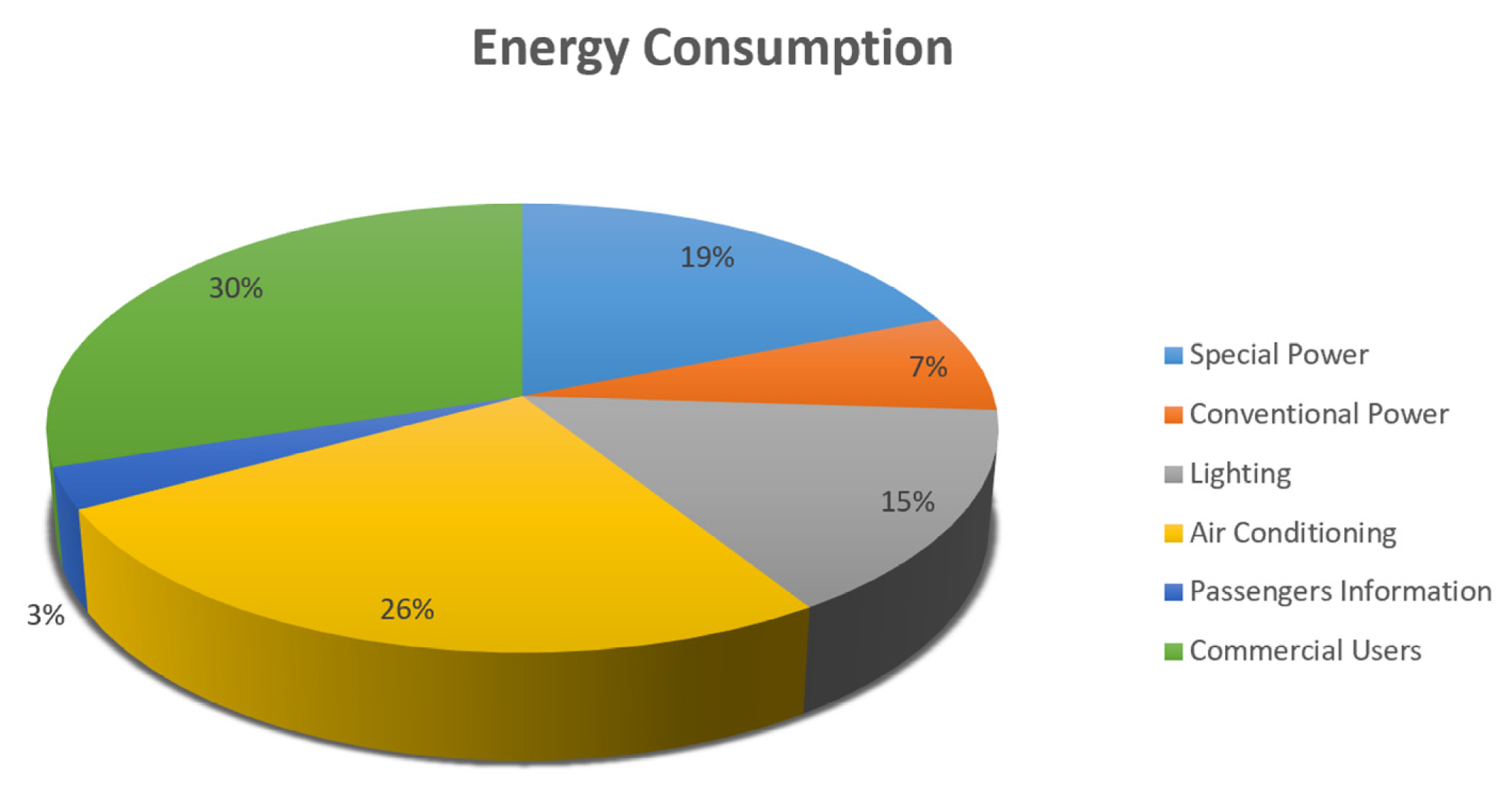



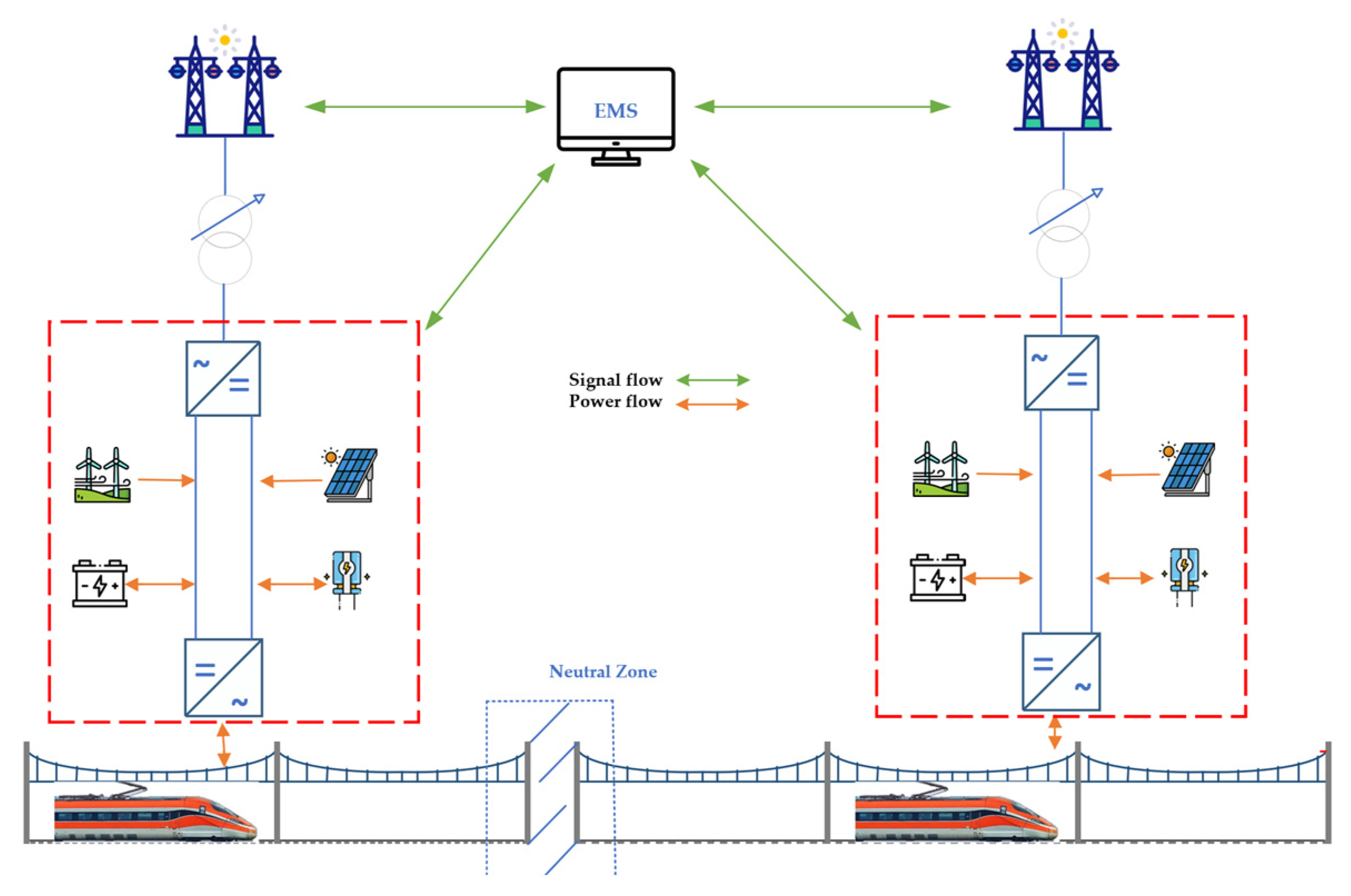

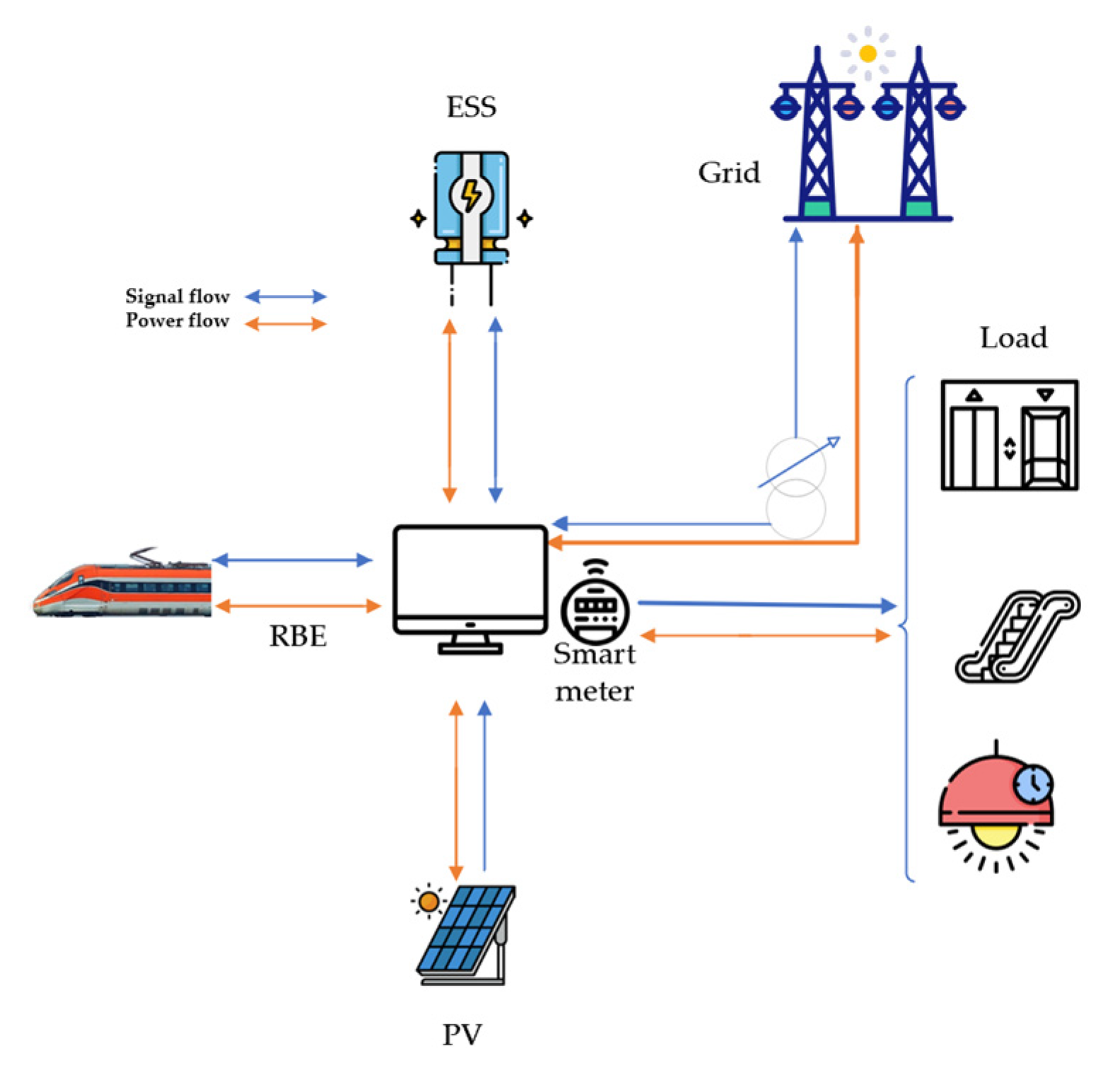
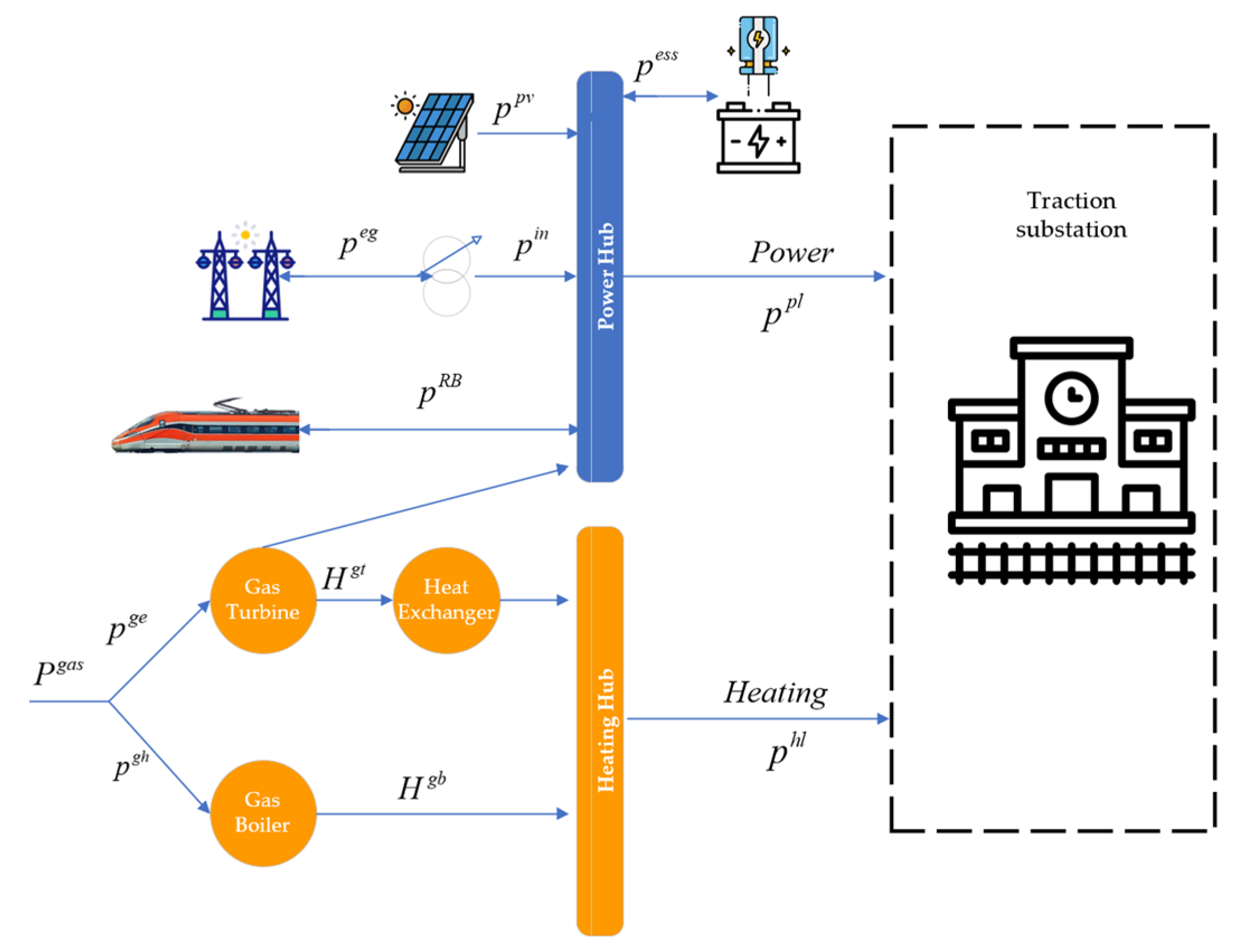
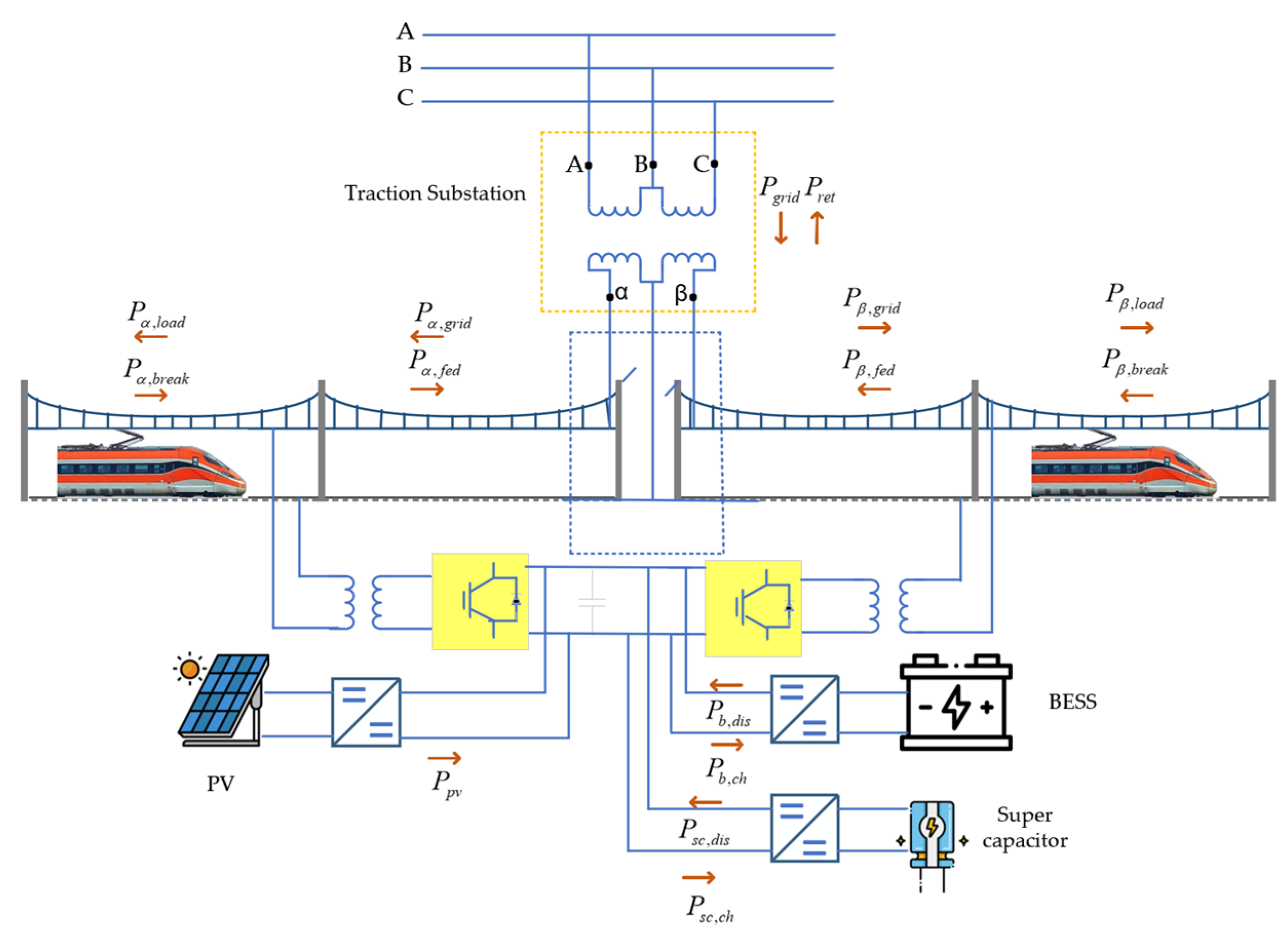



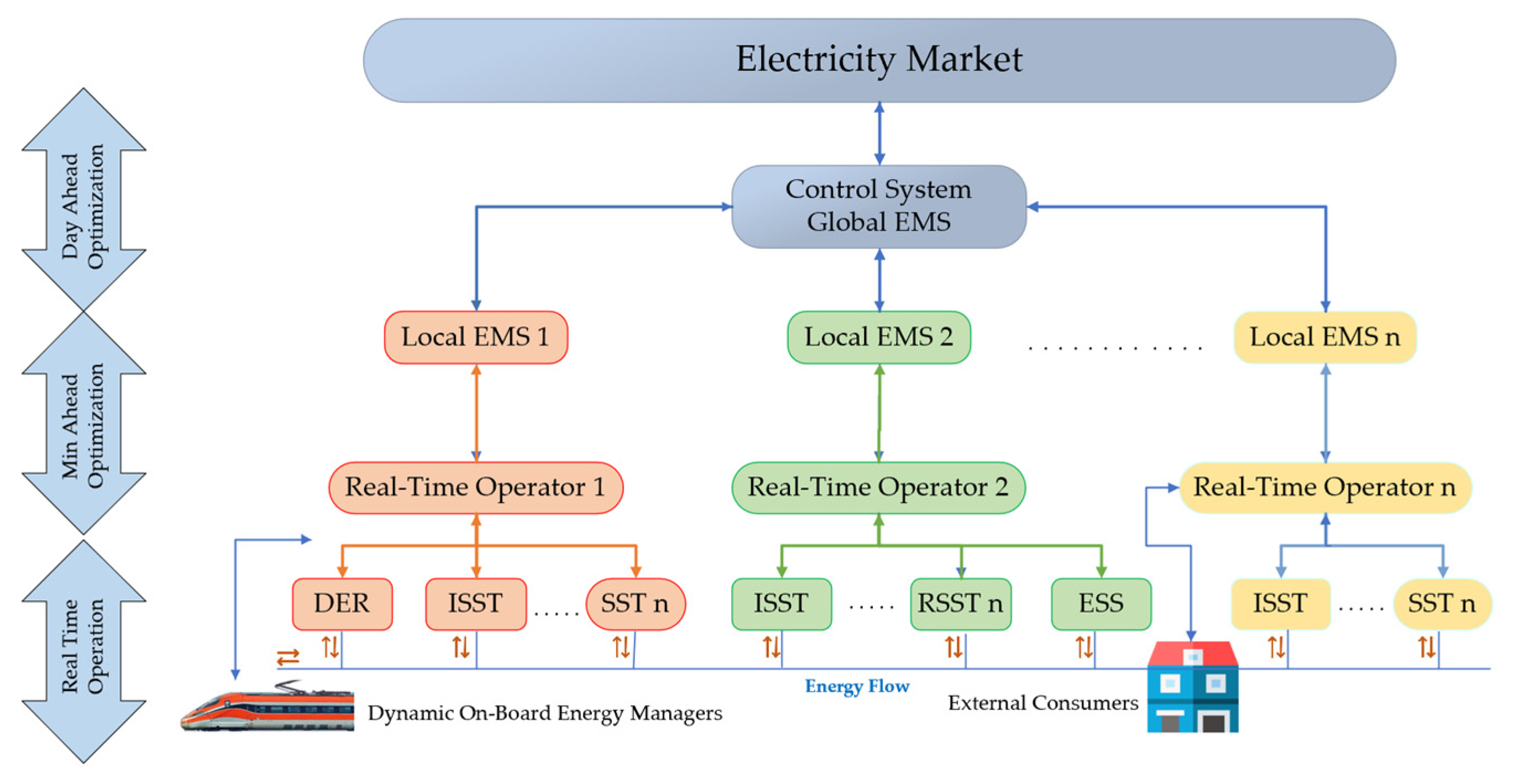
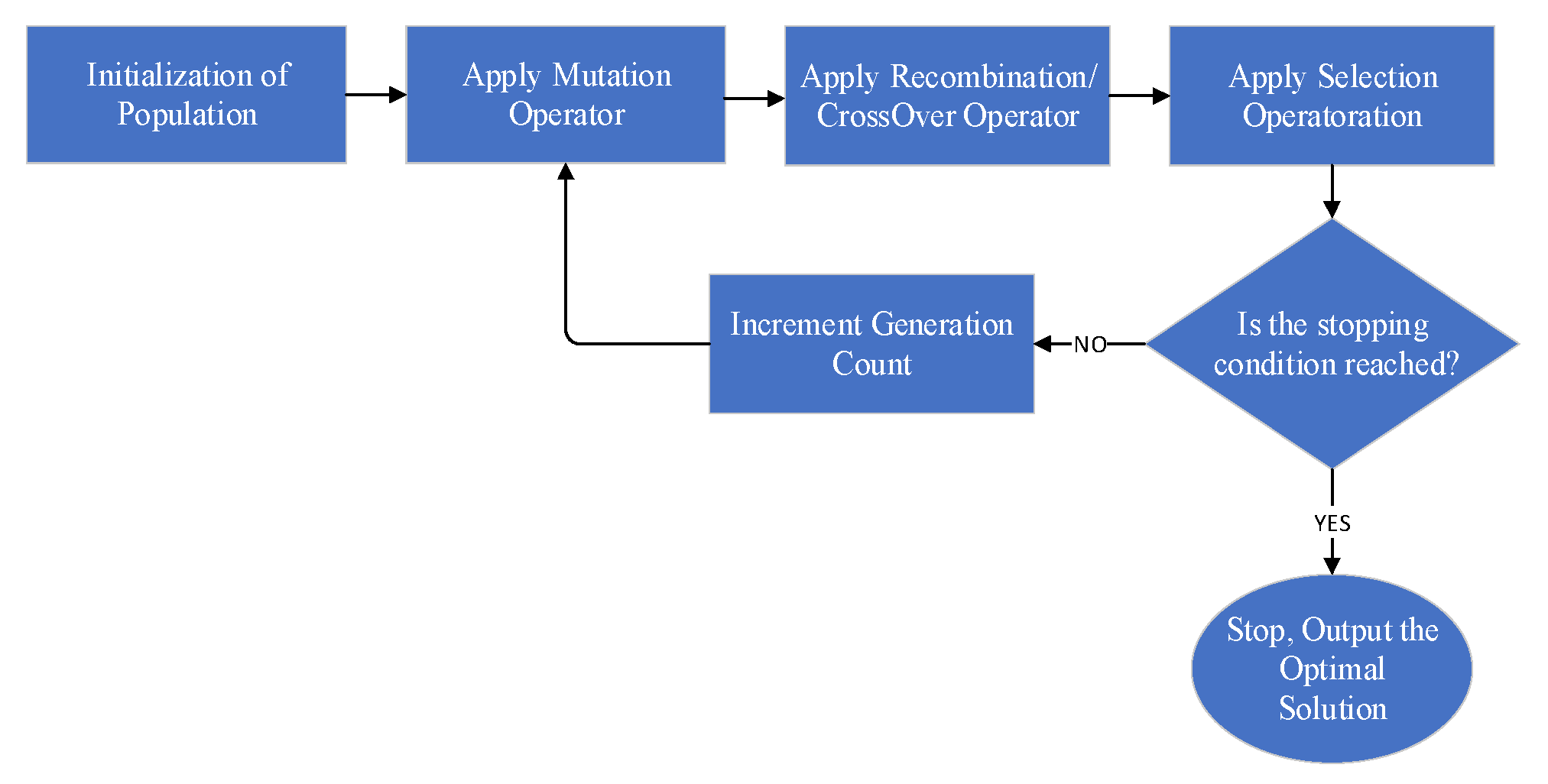

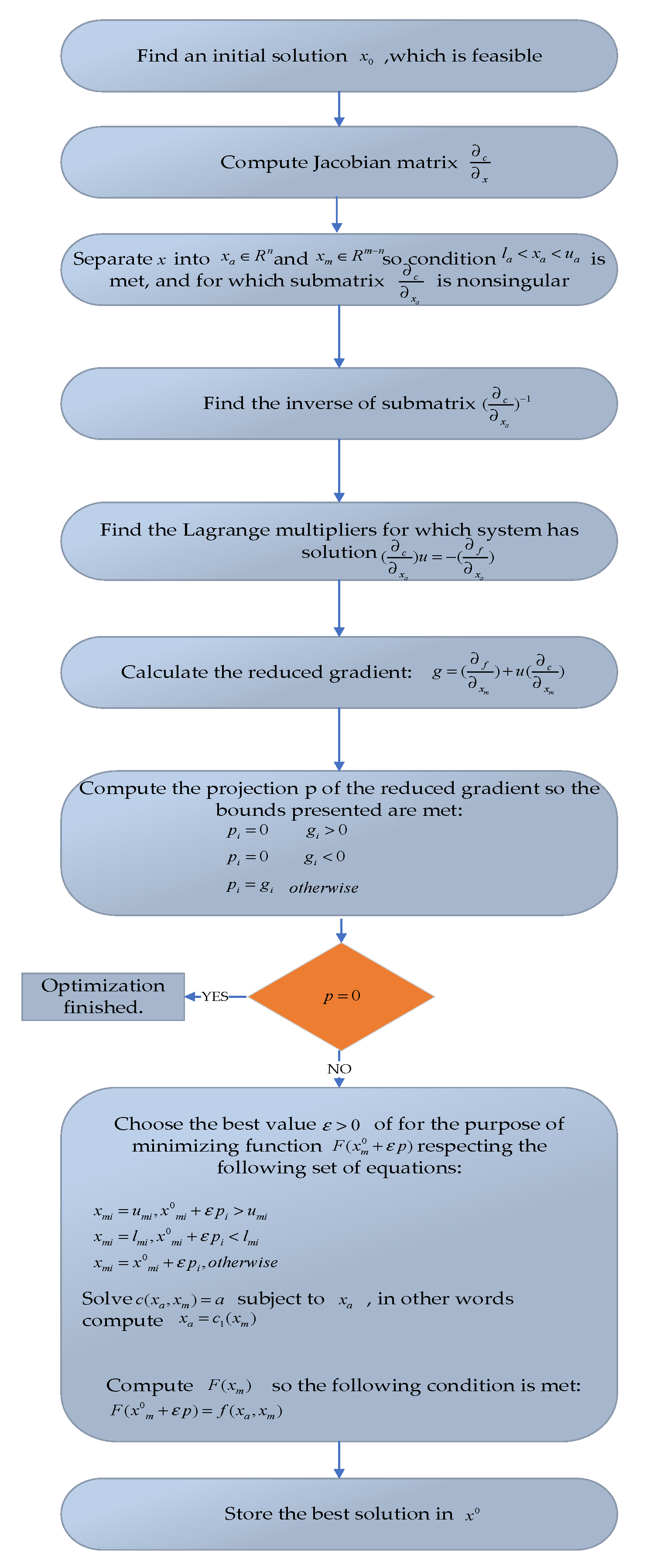
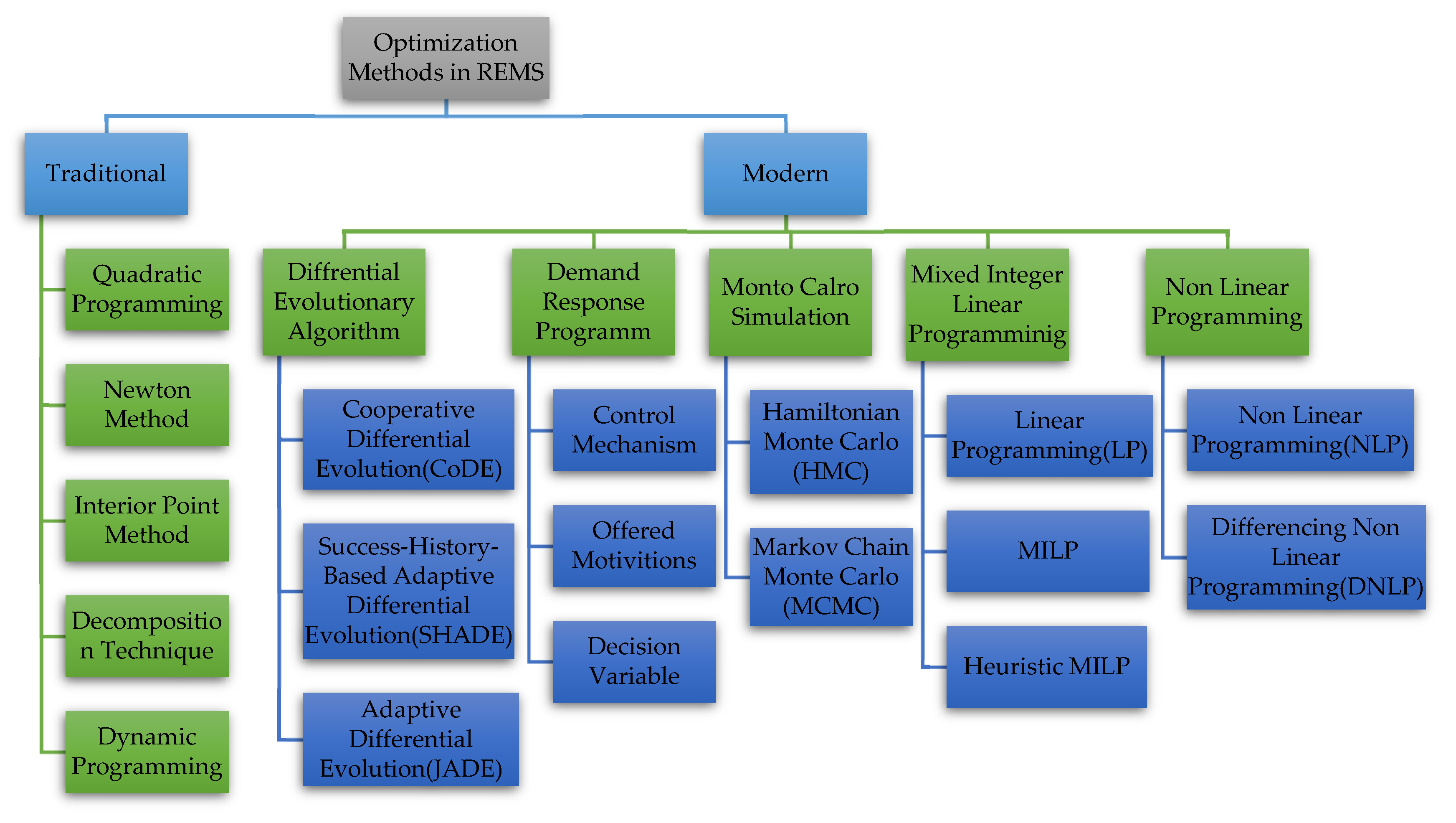

| Research Concern Elements | Stochastic Behavior (Uncertainties) | ||||||||||||||
|---|---|---|---|---|---|---|---|---|---|---|---|---|---|---|---|
| Ref. | Year | Optimization Method | PV | Wind | RBE | ESS | Operation of Transformers | EV Charging | Station Load | Train Demand | Pricing Scheme | PV | Wind | RBE | ESS |
| [42] | 2022 | MILP | ✓ | ✕ | ✓ | ✓ | ✓ | ✓ | ✕ | ✕ | ✓ | ✓ | ✕ | ✓ | ✓ |
| [44] | 2018 | Heuristic MILP | ✓ | ✕ | ✓ | ✓ | ✕ | ✕ | ✓ | ✕ | ✓ | ✓ | ✕ | ✓ | ✓ |
| [45] | 2019 | DEA | ✓ | ✓ | ✓ | ✓ | ✕ | ✕ | ✕ | ✓ | ✓ | ✓ | ✓ | ✕ | ✓ |
| [46] | 2021 | NLP/DEA | ✓ | ✓ | ✓ | ✓ | ✕ | ✕ | ✕ | ✓ | ✓ | ✓ | ✓ | ✕ | ✓ |
| [47] | 2022 | MCS | ✓ | ✓ | ✓ | ✓ | ✕ | ✕ | ✕ | ✕ | ✕ | ✓ | ✓ | ✕ | ✓ |
| [48] | 2021 | DRP/MILP | ✓ | ✕ | ✓ | ✓ | ✕ | ✕ | ✓ | ✕ | ✕ | ✓ | ✕ | ✓ | ✕ |
| [51] | 2020 | MILP | ✓ | ✕ | ✓ | ✓ | ✓ | ✕ | ✕ | ✓ | ✓ | ✕ | ✕ | ✕ | ✕ |
| [52] | 2022 | MILP/C&CG | ✓ | ✕ | ✕ | ✓ | ✓ | ✕ | ✓ | ✓ | ✕ | ✓ | ✕ | ✕ | ✕ |
| [49] | 2022 | MCS | ✓ | ✕ | ✓ | ✓ | ✕ | ✕ | ✓ | ✓ | ✓ | ✓ | ✕ | ✓ | ✕ |
| [8] | 2018 | ------ | ✓ | ✕ | ✓ | ✓ | ✕ | ✕ | ✓ | ✕ | ✕ | ✕ | ✕ | ✕ | ✕ |
| [13] | 2018 | ------ | ✕ | ✕ | ✕ | ✕ | ✕ | ✕ | ✓ | ✕ | ✕ | ✕ | ✕ | ✕ | ✕ |
| Traditional | Modern (Practical) |
|---|---|
| Quadratic Programming | Differential Evolution Algorithm |
| Newton Method | Demand Response Program |
| Dynamic Programming | Monte Carlo Simulation |
| Decomposition Technique | Mixed integer linear programming |
| Interior Point Method | Nonlinear Programming |
| Methods Type | Method Name | General Purpose and References |
|---|---|---|
| Traditional | QP | Classified shared characteristics with linear and nonlinear programming algorithms [74]. Global minimization of the inequality constraints problems [111]. Analysis application of a new recurrent neural network for quadratic programming [112]. |
| Newton | Solve the Lagrangian function by a direct simultaneous solution for all unknowns [75]. Calculating wear between two elastic bodies in contact [113]. Solve a set of n nonlinear simultaneous equations, and obtaining a correction to each element of the approximate solution [114]. | |
| IPM | Primal-dual algorithm and the numerical results for large-scale networks [78]. Solve the optimal control problem in model predictive control [115]. Solve the general nonlinearly inequality constrained problems [116]. | |
| DT | Solve the economic dispatch problem [77]. Coordinating the mid and short-term scheduling of hydrothermal systems [117]. Identify and quantify the separate contributions of group differences in measurable characteristics [118]. | |
| DP | Optimize solutions to align sequences that are not related [76]. Optimizing the train running profile [119]. Application to discrete-utterance and connected-speech recognition [120]. | |
| Modern | DEA | Optimal energy management of railroad electrical systems [45]. Examines the problem of scheduling railway timetables [121]. Fuel loading optimization [122]. |
| DRP | Prime operation of a smart railway station [48]. Measuring consumer response to static time-of-day and seasonal prices [123]. Reduce consumers’ load in real-time once the prices goes beyond a specific point [124]. | |
| MCS | Optimum operation of smart railway stations [49]. Minimizing the operational cost in REMS [47]. Evaluation of kinetic parameters and their effect on the biomass pyrolysis [125]. | |
| MILP | Energy management for railway substation [51]. Robust energy management of high-speed railway [52]. Minimizing the operational cost of smart railway station [44]. | |
| NLP | Ultimate AC power flow for ERSs’ operation [21]. An optimal operation strategy for an ERS’s station based on combined cooling, heating, and power systems [126]. An optimal AC power flow problem for ERSs’ operation [46]. |
| Technique | Speed | Simplicity | Efficiency | Robustness | Accuracy | Performance |
|---|---|---|---|---|---|---|
| NLP | Varies based on problem complexity and solver efficiency | Moderate complexity due to nonlinear nature | Can handle large-scale problems efficiently with suitable solvers | Sensitive to problem formulation and initial conditions | Highly dependent on problem formulation and solution approach | Can provide high-quality solutions, but convergence may not always be guaranteed |
| DEA | Fast and efficient | Relatively simple | Can handle large datasets efficiently | Robust against outliers and noise in the data | Based on relative efficiency rather than absolute accuracy | Provides comparative efficiency scores and rankings |
| MCS | Moderate speed | Relatively simple | Computationally demanding for a large number of iterations | Robust in capturing uncertainty and variability | Accuracy depends on the quality of probability distributions used | Provides probabilistic outputs and risk analysis results |
| MILP | Varies based on problem complexity and solver efficiency | Moderate complexity due to integer variables | Can handle large-scale problems with efficient solvers | Robust against problem formulation and constraints | High accuracy in finding optimal or near-optimal solutions | Provides optimal solutions and guarantees optimality under certain conditions |
Disclaimer/Publisher’s Note: The statements, opinions and data contained in all publications are solely those of the individual author(s) and contributor(s) and not of MDPI and/or the editor(s). MDPI and/or the editor(s) disclaim responsibility for any injury to people or property resulting from any ideas, methods, instructions or products referred to in the content. |
© 2023 by the authors. Licensee MDPI, Basel, Switzerland. This article is an open access article distributed under the terms and conditions of the Creative Commons Attribution (CC BY) license (https://creativecommons.org/licenses/by/4.0/).
Share and Cite
Davoodi, M.; Jafari Kaleybar, H.; Brenna, M.; Zaninelli, D. Energy Management Systems for Smart Electric Railway Networks: A Methodological Review. Sustainability 2023, 15, 12204. https://doi.org/10.3390/su151612204
Davoodi M, Jafari Kaleybar H, Brenna M, Zaninelli D. Energy Management Systems for Smart Electric Railway Networks: A Methodological Review. Sustainability. 2023; 15(16):12204. https://doi.org/10.3390/su151612204
Chicago/Turabian StyleDavoodi, Mohsen, Hamed Jafari Kaleybar, Morris Brenna, and Dario Zaninelli. 2023. "Energy Management Systems for Smart Electric Railway Networks: A Methodological Review" Sustainability 15, no. 16: 12204. https://doi.org/10.3390/su151612204
APA StyleDavoodi, M., Jafari Kaleybar, H., Brenna, M., & Zaninelli, D. (2023). Energy Management Systems for Smart Electric Railway Networks: A Methodological Review. Sustainability, 15(16), 12204. https://doi.org/10.3390/su151612204







